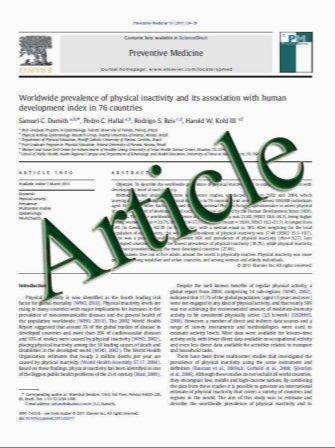CD11c-expressing cells reside in the juxtavascular parenchyma and extend processes into the glia limitans of the mouse nervous system
- نوع فایل : کتاب
- زبان : انگلیسی
- مؤلف : Carolin Prodinger Jo¨rg Bunse Martin Kru¨ger Fridtjof Schiefenho¨vel Christine Brandt Jon D. Laman Melanie Greter Kerstin Immig Frank He
- چاپ و سال / کشور: 2010
Description
Recent studies demonstrated that primary immune responses can be induced within the brain depending on vessel-associated cells expressing markers of dendritic cells (DC). Using mice transcribing the green fluorescent protein (GFP) under the promoter of the DC marker CD11c, we determined the distribution, phenotype, and source of CD11c? cells in non-diseased brains. Predilection areas of multiple sclerosis (MS) lesions (periventricular area, adjacent fibre tracts, and optical nerve) were preferentially populated by CD11c? cells. Most CD11c? cells were located within the juxtavascular parenchyma rather than the perivascular spaces. Virtually all CD11c? cells co-expressed ionized calcium-binding adaptor molecule 1 (IBA-1), CD11b, while detectable levels of major histocompatibility complex II (MHC-II) in non-diseased mice was restricted to CD11c? cells of the choroid plexus. Cellular processes project into the glia limitans which may allow transport and/or presentation of intraparenchymal antigens to extravasated T cells in perivascular spaces. In chimeric mice bearing CD11c-GFP bone marrow, fluorescent cells appeared in the CNS between 8 and 12 weeks after transplantation. In organotypic slice cultures from CD11c-GFP mice, the number of fluorescent cells strongly increased within 72 h. Strikingly, using anti-CD209, an established marker for human DC, a similar population was detected in human brains. Thus, we show for the first time that CD11c? cells can not only be recruited from the blood into the parenchyma, but also develop from an intraneural precursor in situ. Dysbalance in their recruitment/development may be an initial step in the pathogenesis of chronic (autoimmune) neuroinflammatory diseases such as MS
Acta Neuropathol (2011) 121:445–458 DOI 10.1007/s00401-010-0774-y


